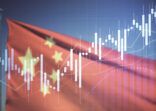Despite the economic shock caused by the coronavirus pandemic in 2020, China Mainland active managers were generally better able to navigate the market volatility than their passive peers.
Between 76% and 90% of active diversified stock-heavy funds survived and outperformed their average passive peers last year, and in trailing three-, five-, and 10-year periods. This marks the second-highest success rate since Morningstar launched its “China Active/Passive Barometer” in 2018.
“The improved success rate in 2020 could be partly explained by the favourable returns on the growth stocks last year, given approximately 80% of active diversified stock-heavy funds’ investment styles are tilted toward growth,” said Rachel Wang, Morningstar’s director of manager research, China.
The Morningstar China Active/Passive Barometer measures the performance of onshore China-domiciled active funds against their passive peers in their respective Morningstar categories.
These include broadly diversified stock-heavy (at least 70% allocated to equities) funds in the consumer, health, and technology and communications sectors.
“Actively managed technology and communications sector funds had the highest success rates among all three sector fund groups we studied. The relatively lacklustre performance of the sector indexes had weighed on the passive funds’ performance and created ample opportunity for active managers to add value,” said Wang.
Compared with the success rates a year ago, China onshore stock-pickers saw a 21.3 percentage point increase in their three-year success rate as of 31 December 2020. The one- and five-year success rates rose by 11.7 and 4.0 percentage points, respectively, from their year-end 2019 levels.
Growth bias
About 80% of active diversified stock-heavy funds’ investment styles are tilted toward growth, according to Morningstar.
Food and beverage, healthcare, and electronics sectors were preferred by most onshore active managers, and were the best-performing sectors in 2020.
The SWS food and beverage index, healthcare index, and electronic index were up 85.0%, 51.1%, and 36.1%, respectively, compared with the CSI 300 Index’s 27.2% and the CSI 500 Index’s 20.9%.
Most active managers were rewarded for staying true to their style, favouring better-performing quality growth names. Moreover, their strong sector allocation and stock selection also helped them make the most of the stylistic tailwind.
Active diversified stock-heavy funds also continued to enjoy slightly higher survivorship rates relative to their passive rivals, according to Morningstar.
The survivorship rate for active funds was above 97% in all the periods the research firm examined, while just 74% to 93% of passive funds survived during the same periods, down from 79% to 97% as of year-end 2019.
“Passive funds have generally experienced difficulties, such as fierce competition for homogenized products, lack of distribution-channel promotion, and mediocre performance, which have led to higher liquidation and transformation rates,” said Wang.
















